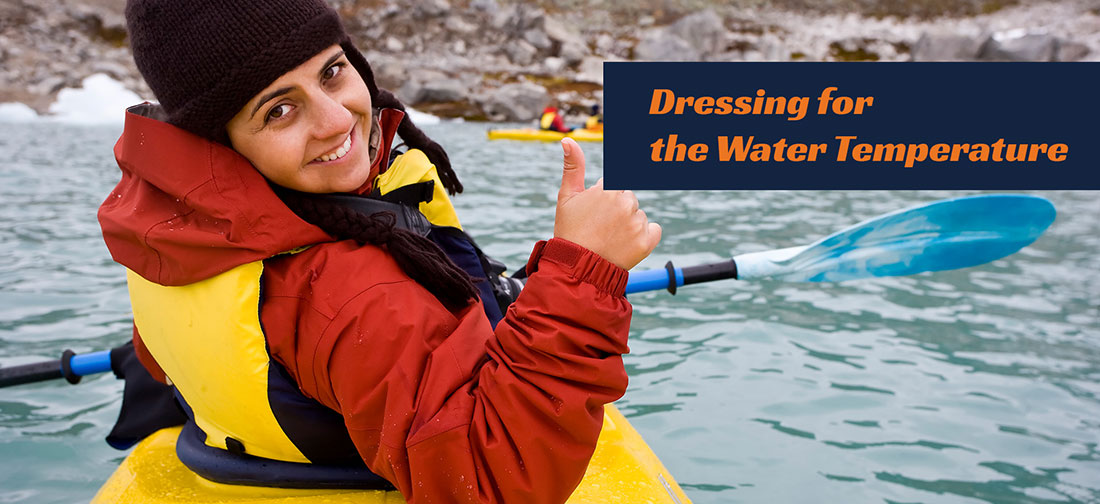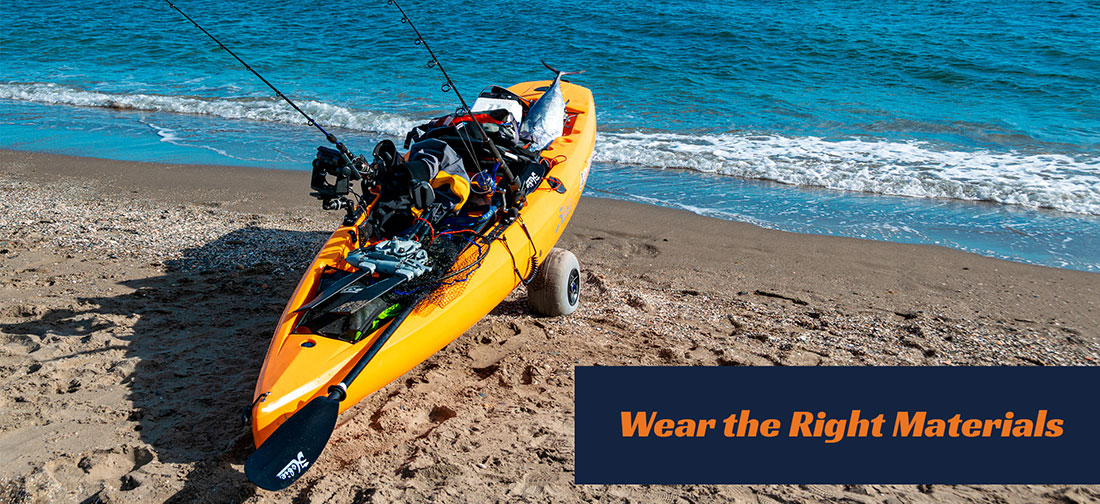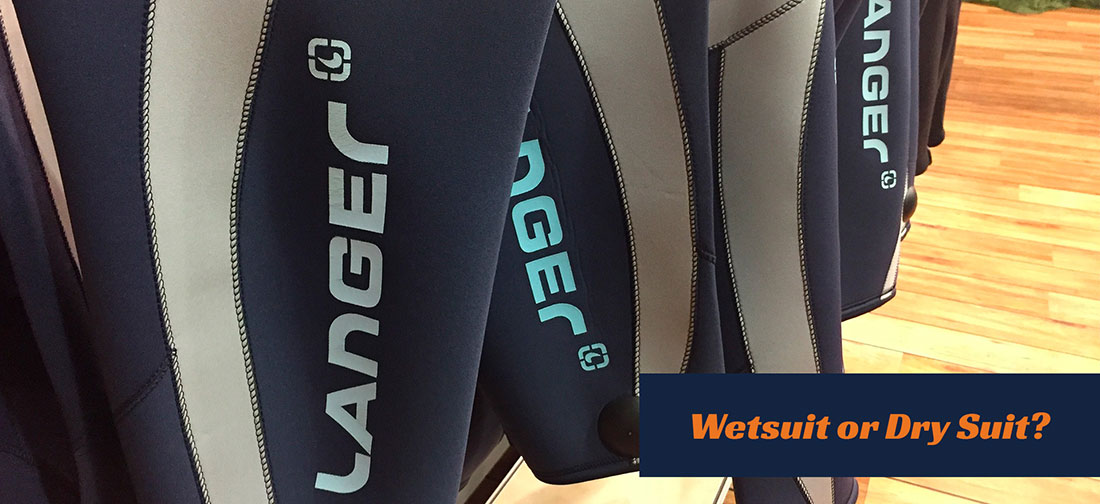What temperature is too cold for kayaking?
Going on a Vegas kayak tour any time of the year can be tremendous fun. Although Las Vegas gets hot in the summer, what are the temperatures like throughout the year? Does it ever get too cold to kayak in the Southwest? No matter your kayaking skill level, it’s always best to assume that you may end up in the water, even if you’re more experienced. Although you can kayak year-round, you will want to take some added safety precautions for safe boating in cooler weather.
What’s so Bad About Cold Water?
Kayaking in cold water has certain risks that all kayakers must be prepared for. Even if you have never capsized before and don’t think you will, it’s never safe to assume you will stay dry when you’re boating. One of the most significant hazards associated with kayaking is hypothermia. While hypothermia may take some time to set in, muscle incapacitation, a precursor to hypothermia, can set in within 5-15 minutes. Muscle incapacitation compromises your ability to perform basic and potentially life-saving tasks, such as getting back in your boat or calling for help if you fall out. There is not much that you can do once muscle incapacitation sets in, so the best thing to do is prevent it in the first place. One of the easiest ways to do that is by dressing warmer so that you don’t get cold as quickly if you do fall in.
Water Shock
If you’ve ever jumped into a cold pool or taken a cold shower, you know that feeling of losing your breath for a few seconds when you’re first exposed to colder temperatures. That same phenomenon, called water shock, can also happen when kayaking in Vegas. If you are immersed in cold water, your body’s immediate response is to take in air, and that same automatic response will happen even if you are upside down in the water. Dressing for colder temperatures will help prevent water shock, just as it can reduce the risk of developing hypothermia and related complications. However, wearing a personal flotation device (PFD) adds another layer of protection against cold water exposure.
Dressing for the Water Temperature
You want to dress according to the surrounding air temperature for many outdoor activities. However, kayaking is different in that you should dress for the water temperatures, which are generally colder than the air temperature. Water temperatures below 70° Fahrenheit are considered risky for hypothermia. For water temperatures between 55°F and 59°F, you will want to have a wetsuit, as there is a moderate risk of hypothermia. Even water temperatures that drop just below that amount from 45°F to 54°F can be much more dangerous. Water temperatures in this range have a higher likelihood of causing hypothermia.
It’s a good idea to get a dry suit if you will be boating in water temperatures that cold. If the water is colder or your wet suit doesn’t keep you warm enough, you can wear layers underneath the wetsuit to stay warmer. Although there is a consensus about the type of clothing that should be worn for people kayaking in certain temperatures and conditions, not everyone agrees about whether or not a wetsuit and all the added layers should be worn the entire time you’re kayaking or if you should just bring the clothes along in the boat with you. Much of that decision is personal; if the air temperature will be warmer during the day or if you’ll be paddling in calmer waters, you might want to bring the wetsuit or additional layers along in the boat.

Wear the Right Materials
Wearing the right materials is essential for comfortable kayaking. The first rule of dressing for kayaking is to avoid cotton. Synthetic fabrics are a much better choice, and cotton will not absorb and wick away materials like synthetic fabrics, which can leave you wet and cold. If you are already dealing with cold water and air temperatures, having fabrics that worsen the condition rather than help you out is much worse.

Dress in Layers
No matter what fabrics you choose dress in layers. If you get too warm, you can always remove a top layer, but you can’t add layers if you don’t bring enough to begin with. If you think you won’t need a certain kind of clothing but want to have it along just in case, you can always put your extra clothing in a dry bag so that if you need to wear the clothes, they will stay dry in the meantime.
Wetsuit or Dry Suit?
People who participate in water sports are generally familiar with wetsuits. But do you know what a dry suit is and when you might choose a dry suit over a wetsuit? Wetsuits are typically made of neoprene. They allow a layer of water to form between your body and the neoprene. The heat from your body warms up the water and helps keep you warm. Essentially, the water creates a layer of insulation. Wetsuits are available in different sizes and thicknesses. The thinnest wetsuits are as thin as 0.5 millimeters, while you can get wetsuits with a thickness of up to 7 millimeters or even more. Full-body wetsuits are recommended for colder water temperatures or if you’ll be submerged frequently or for extended periods of time, like scuba diving. If you’re looking for something less heavy-duty, wetsuits are available just as tops or shorts.
Dry suits are another option. Dry suits tend to cost a bit more than wetsuits. They are typically made of breathable material and often have gaskets around openings such as the wrists, neck, and ankles. You can sometimes get dry suits with booties, too. While wetsuits are generally made from one material, which is neoprene, dry suit gaskets can be made of latex instead of neoprene. The gaskets on the dry suits can also vary. Neoprene can be more comfortable against the skin than latex. Remember that a neoprene gasket won’t be as skintight as a latex gasket, but a dry suit with a neoprene gasket will likely be more comfortable. Another distinguishing characteristic between wetsuits and dry suits is that dry suits only keep you dry, not warm like wetsuits.

While a wetsuit or dry suit can keep your torso and possibly feet warm and dry, they don’t generally cover your head or your hands. If you are going on a Vegas kayak tour on a cold day, you will probably want to wear a hat and gloves. If you don’t have a wetsuit or dry suit with foot coverings, consider wearing socks, too.
No matter what you choose to wear, bring an extra set of clothing in case you (or someone else on your Hoover Dam kayak tour) fall(s) into the water and gets wet.
Along with wearing or bringing the right clothing on your Las Vegas kayak trip, you may also want to bring along food and beverages that can keep you warm, such as hot chocolate, tea, and power bars for energy.
For more information about kayaking in Vegas when the temperatures dip, contact the helpful and knowledgeable Blazin’ Paddles team for details.

